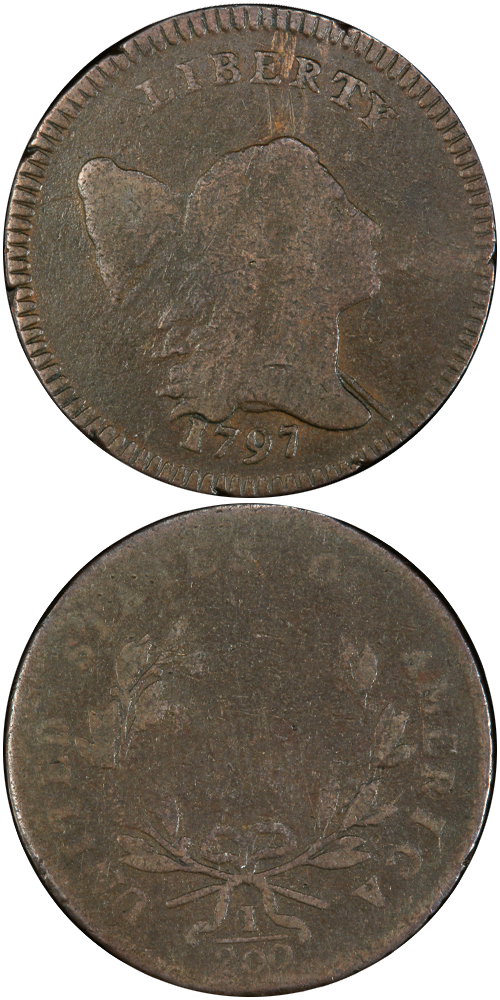1797 Liberty Cap Half Cent
Gripped Edge
Confirming the great rarity of these Gripped Edge half cents is the fact that noted expert Jules Reiver did not have an example in his vast collection. This edge variant was discovered in the 19th Century and one was offered in the H. Rogers Collection sold by S. K. Harzfeld in January 1881, lot 281. Another was offered in the great Stickney Collection of 1907. More recently, a Good Details — Tooled (PCGS) example was sold by Heritage in September 2016 for $54,050, and a Good-6 (PCGS) coin from the Davy Collection was sold by Ira and Larry Goldberg in 2011 for $195,500, affirming that the demand for these elusive anomalies is strong than ever.
Just about a dozen examples exist in all grades and most show significant wear or surface problems. Apparently, the "low heads" half cents of 1797, including the C-3c, were struck late in the period, possibly as late as early 1800 as Breen discusses in his Encyclopedia. Given the numbers of "spoiled cent" stock used this would arguably make sense as so few 1800 dated half cents show evidence of cent stock undertype. These Gripped Edge pieces were struck on rolled down (thinned) cent planchets at a time where anything copper was pressed into coinage as the need for small change was great.
What brought about the vertical "grips" or reed marks on the edge begs scrutiny. Clearly these are intentional and imparted most likely by some form of collar, or less likely by the casting machine that was used to letter the edges of the silver coinage. Historically, copper coin reeding was ignored due to the fact that copper was not worth the trouble to shave off. Despite their enigmatic inception, the C-3c variety occupies a rarified space in the realm of U.S. copper and any example represents a jewel in a collection.
The example to the left was sold by Stack's Bowers Galleries in the March 2020 Showcase Auction, where it realized $90,000.






